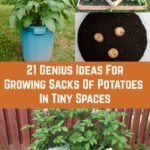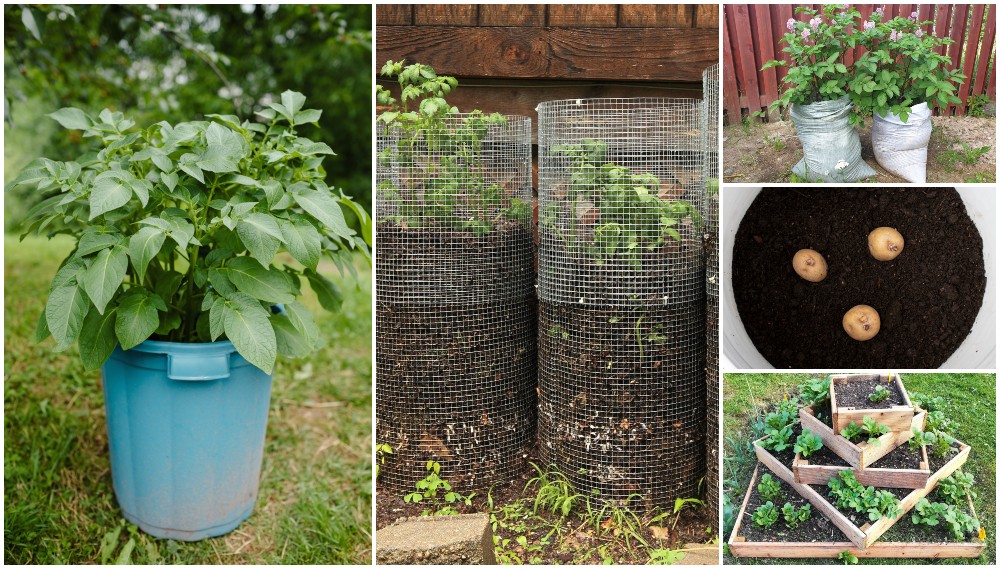
Potatoes are a staple crop, and a great thing to grow in your garden. But if you grow them in traditional rows, they do take up an awful lot of space.
Fortunately, you don’t need to have a small farm to grow some spuds. Not when you consider all the space saving potato growing ideas out there.
To help you determine how best to grow potatoes where you live, and to help you get a worthwhile yield whatever your space restrictions, here are 21 space saving potato growing ideas to consider for your garden:
1. 5 Gallon Buckets
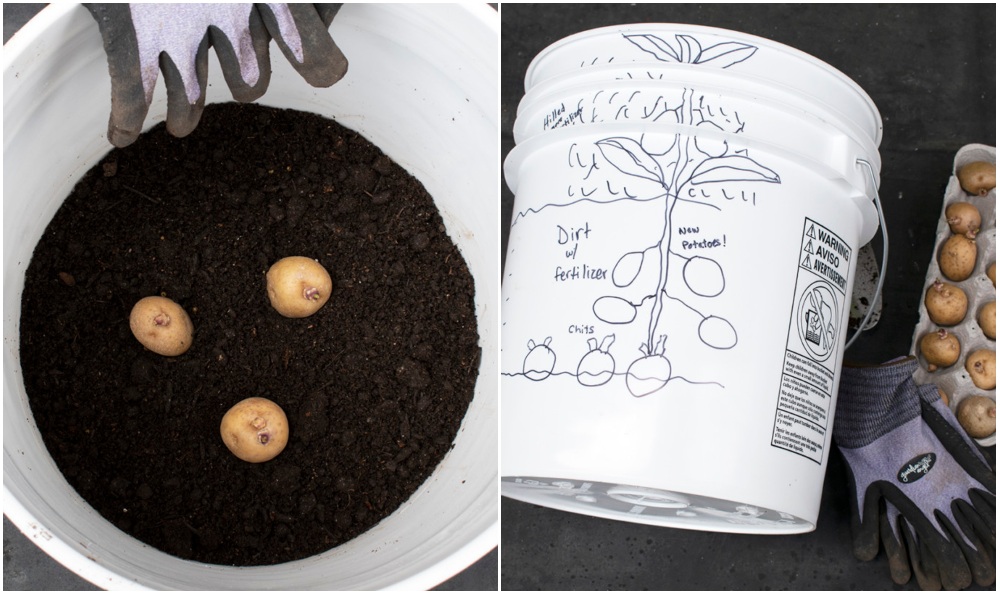
One of the simplest and easiest ways to grow potatoes is in space saving 5 gallon buckets.
It is usually pretty easy to get your hands on a few food grade buckets to reuse. And you’ll have space for some even on a balcony or porch, or in the smallest of spaces.
Check out this article to find out how to easily grow potatoes in a 5-gallon bucket.
And that’s not all that can be grown in 5 gallon buckets!
2. Potato Grow Bags
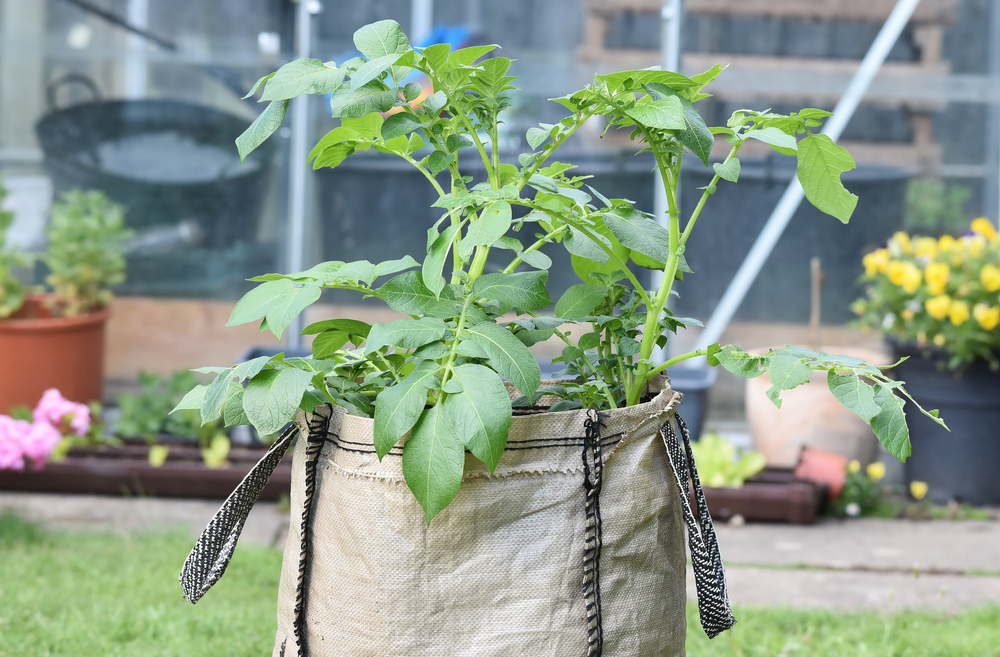
Another easy potato growing idea great for space saving is to grow them in grow bags.
Choose a sturdy type and you can reuse your grow bags for years to come.
These heavy duty fabric grow bags are ideal. They are made with premium non-woven fabric so are eco-friendly, sturdy but lightweight and can be used year after year.
Grow bags make it easier to grow potatoes in small spaces but they also make harvesting your crop at the end of the season very easy too.
All you have to do is tip out the contents of the bag, collect up the tubers, and make use of the spend compost/ growing medium somewhere else in your garden.
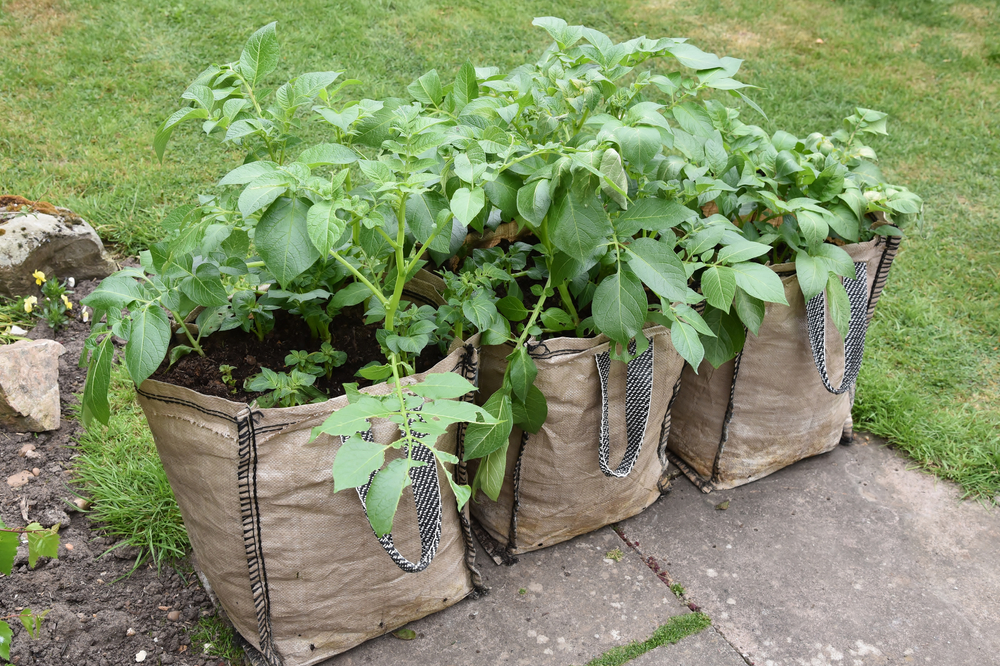
3. Old Tote Bags
But you don’t necessary have to buy grow bags. You could also consider reusing items you already own.
One idea, for example, is to use old reusable grocery bags or tote bags for the purpose.
DIY Potato Grow Bag @ twogreenboots.com.
4. Old Compost Sacks
You could also reduce waste and save money by making your own grow bags from the sacks that compost, potting soil or other garden products come in.
To make things look a little more uniform and attractive, you can turn them inside out so they just look like a series of typical black grow bags.
How to Grow Potatoes in a Compost Bag @ gardenersworld.com.
5. Grow Bags Made From Old Clothes or Other Reclaimed Fabric
Another idea is to make your own grow bags from old clothes or other reclaimed fabric. For example, an old pair of jeans can make an interesting and unusual planter that certainly could be an interesting talking point in a space saving garden.
Growing Potatoes In Your Pants @ chippewa.com
6. Coffee Sack Grow Bags
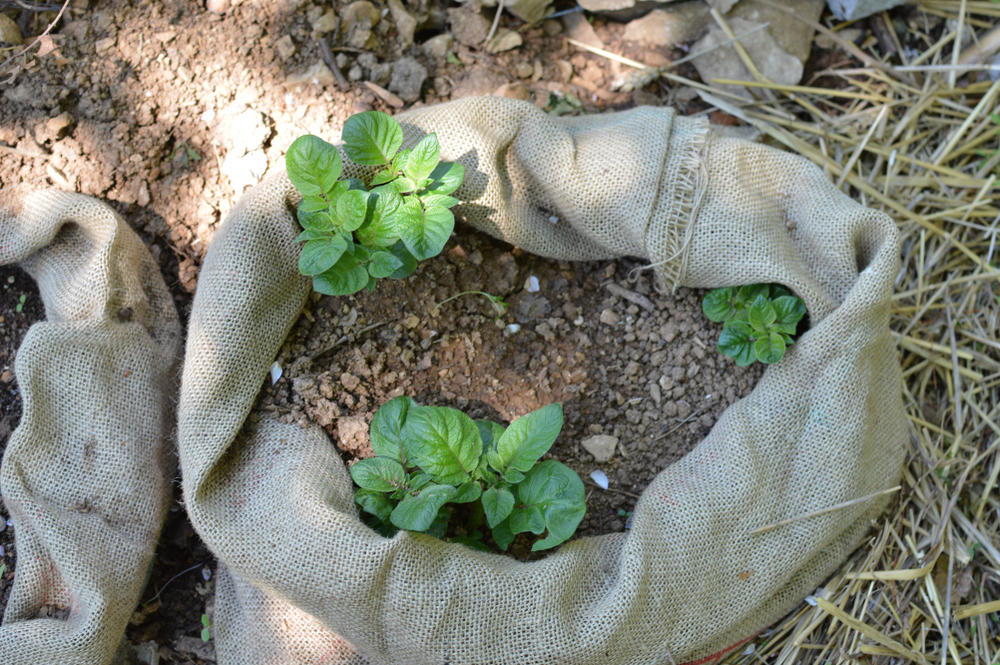
Upcycle an old coffee sack into a brilliant potato grow bag. If you ask in the right places, you can often source these for free.
The great thing about this project is that coffee sacks are woven so drainage comes as standard. They are also much more attractive than ugly plastic sacks. Most coffee sacks are biodegradable but will last at least one grow season. Afterwards they can be used as mulch or weed control.
Grow Potatoes In Recycled Coffee Sacks @ homegrownfun.com
7. Cardboard Box Potato Planter
Another cheap, cheerful and eco-friendly space saving idea for growing potatoes is to grow them in a large cardboard box.
If, for example, you have a large appliance delivered, the box it comes in could be perfect for the purpose. When the cardboard gets wet, it will, of course, begin to break down. But it should last long enough to see you through to the potato harvest. And as long as it is brown cardboard, untreated, it can simply be ripped up and popped onto your composting system.
You could even stack cardboard boxes to make potato towers. Check out this video to find out more:
8. Laundry Basket Potato Planter
If you have, or can source, an old laundry basket that is no longer needed for laundry, then this is another thing that could be used to grow potatoes in a space saving way.
(Just make sure you line it out to stop soil escaping through the holes and to exclude sunlight from the tubers.)
Yes Mom, You Can Grow Potatoes in a Laundry Basket @ preparednessmama.com.
9. Wattle Fence ‘Basket”
Another cheap (perhaps free) and affordable space saving idea for growing potatoes is to grow them in DIY ‘baskets’ or raised beds made in the same way that you would make a wattle fence or wattle bed edging.
Simply stick upright branches in a circle, then wind pliable branches between these uprights to create sides that will hold your potato plants and the materials surrounding them in place.
10. Wire/ Mesh Potato Towers

Potato growing towers can also be made quickly and easily by creating cylinders from wire/ mesh/ old chicken wire fencing etc..
Here’s a video showing you how to get started:
11. Wood Towers
You can also make potato towers from recycled wood.
Make four corner posts to which planks of recycled wood can be nailed or screwed as your plants grow. That way, you can continue to add to your stack as the potatoes reach for the sky.
Square Box Vertical Potato Tower @ tipnut.com
12. Tire Stacks
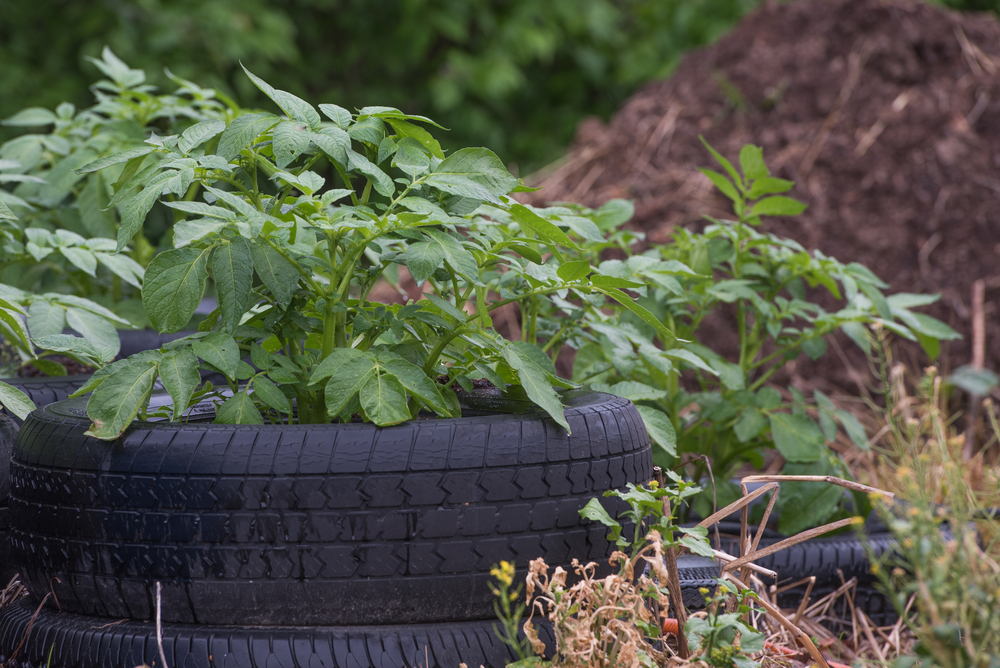
Another idea is to use tire stacks for space saving. As we explain in this article, old tires can be upcycled in a range of ways around your homestead.
We recommend that you line the tires to avoid any potential contamination issues. But tires can form a useful planter for a few potato plants, and can be another way to maximise yield in small spaces.
13. 55 Gallon Barrel
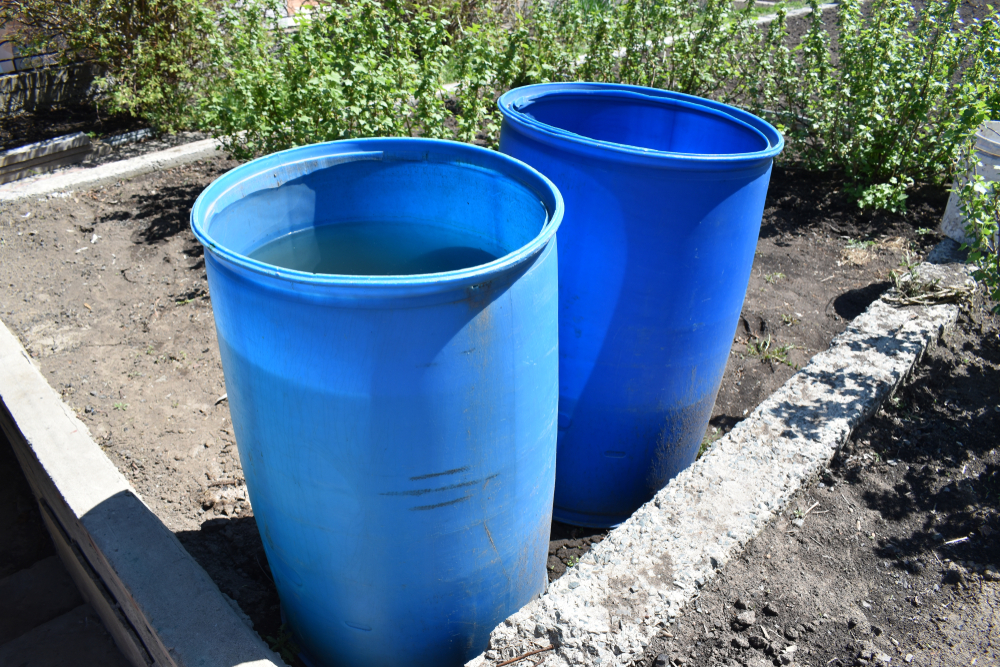
55 gallon barrels are other reclaimed items that have a huge range of uses around your homestead. Using one to grow some potatoes is certainly one more idea to add to the list.
4 Simple Steps to Grow a Hundred Pounds of Potatoes in a Barrel @ urbanconversion.com.
14. Typical Raised Bed or Planter
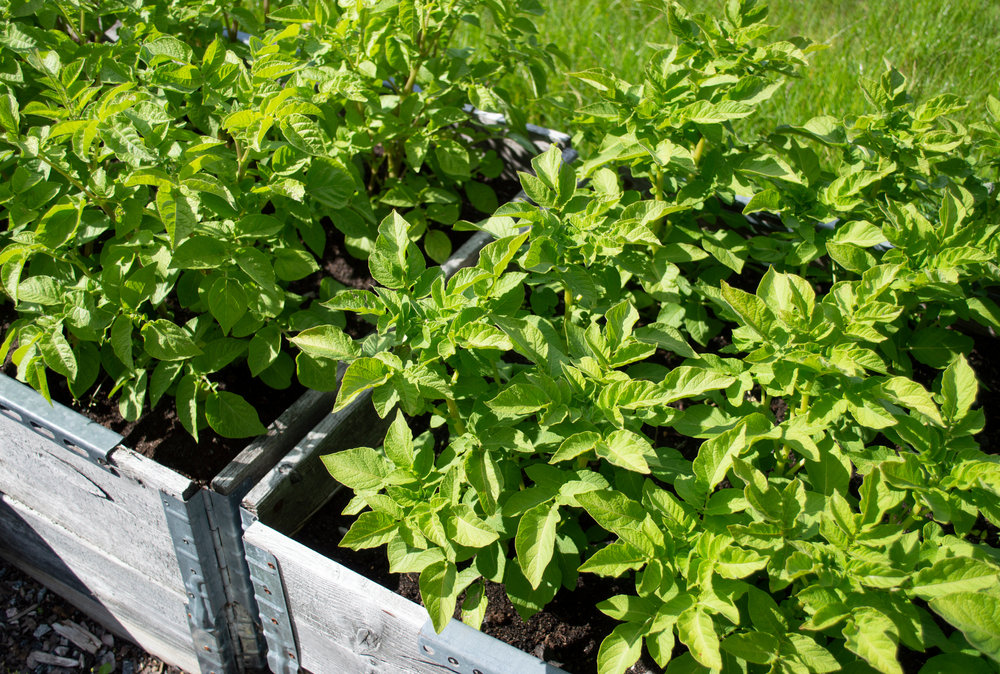
You don’t necessarily have to take an unconventional route. Other space saving potato growing ideas simply involve planting a few potato plants in more traditional raised beds or planters.
There are plenty of raised bed ideas to consider, any many of them work well even in the smallest of gardens.
15. Pyramid Raised Bed
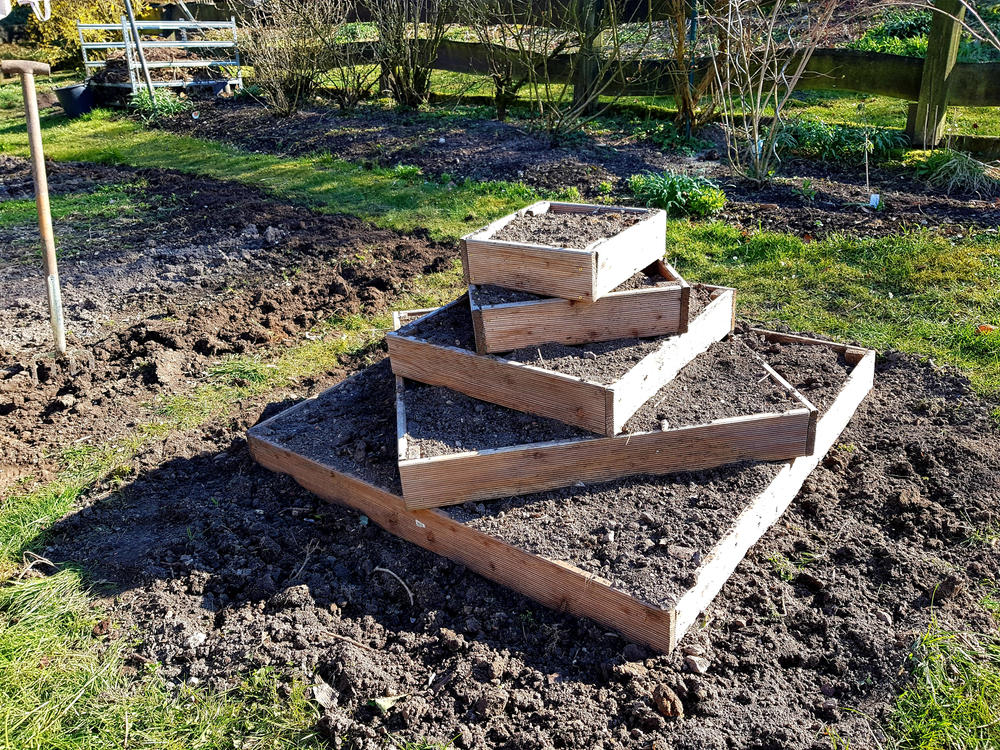
If you want to try something a little different, that will provide plenty of potatoes while still looking good, how about growing potatoes in a pyramid raised bed?
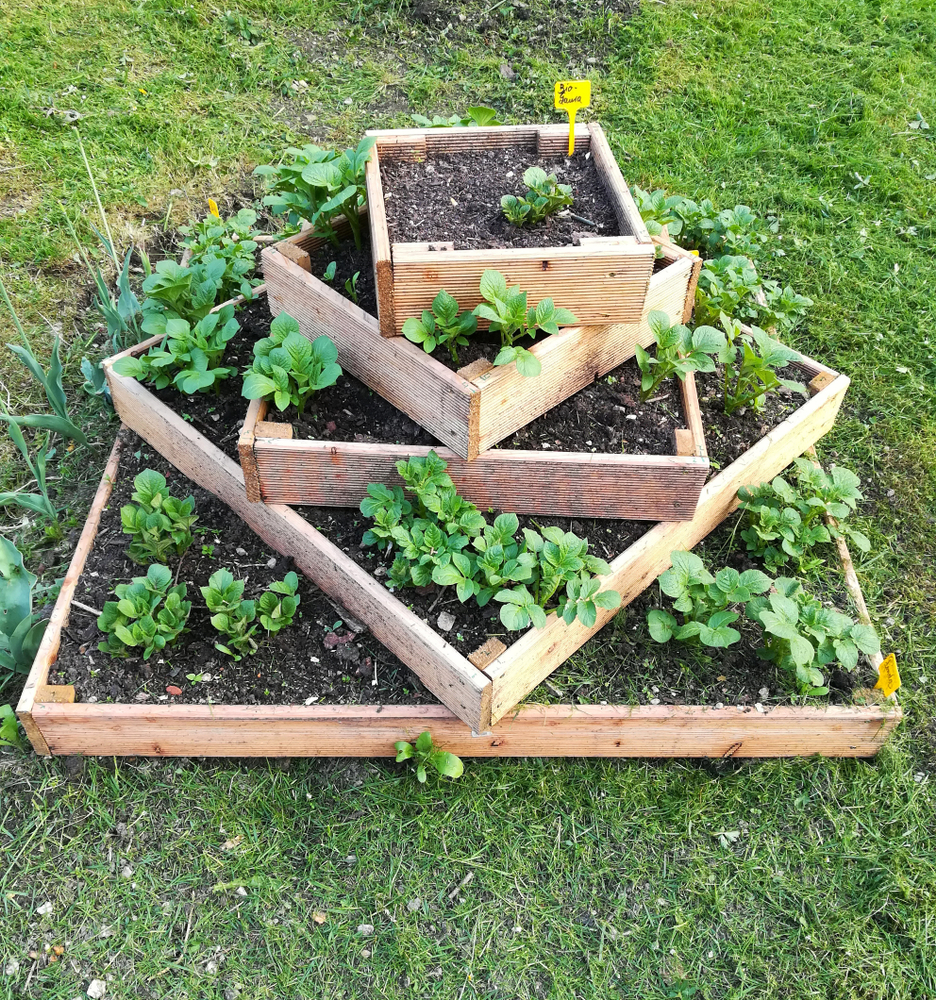
As long as you make sure there is enough depth to each of the sections to earth up, you can have fun playing around with the levels of raised beds to create an interesting and decorative effect.
Remember to include companion plants with your potatoes too.
16. Stacked Planters
You could create a similar effect by stacking planters in decreasing size. Plant some potatoes around the edges of the largest ones, and in the smallest container at the top.
Again, as long as you leave space to earth up in each one, this could be another way to get plenty of potatoes from tiny spaces.
17. Traditional Potato ‘Lazy Bed’
In my article on potato growing tips, I mentioned the idea of a ‘lazy bed’ and the ‘no dig’ variant of this idea often known as a ‘lasagna’ bed.
One thing to remember about this type of growing area is that you can make them in virtually any shape and size.
Alys Fowler: Try a Little Laziness @ theguardian.com.
18. Straw Bales
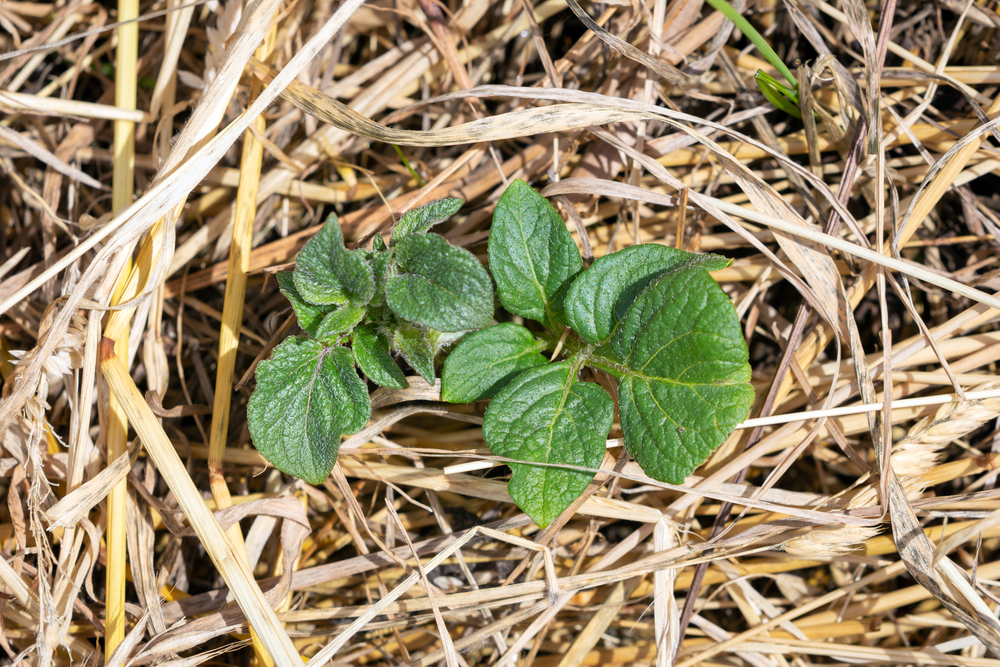
Another space saving potato growing idea involves growing potatoes in straw bales. As long as you water and fertilize your bales to start the decomposition process, and hill around the growing plants with more straw, this is another solution that can give some good yields.
Here’s our guide to growing food in straw bales.
19. Hugelkultur Bed
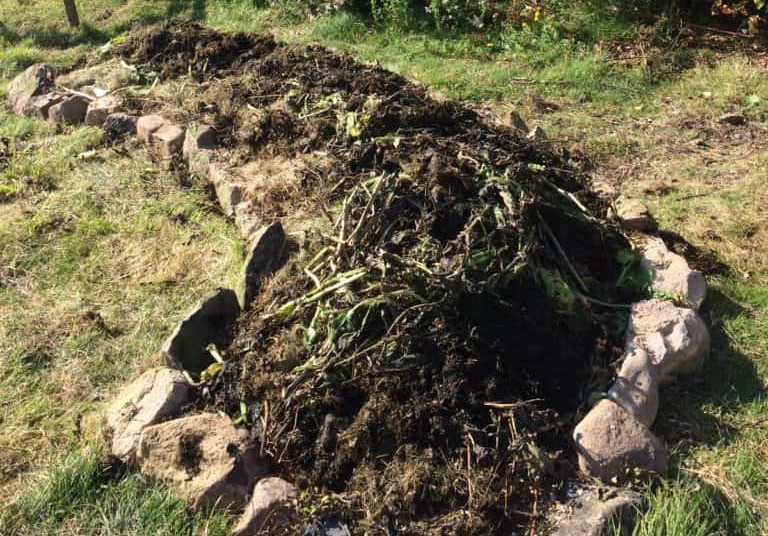
Whether your mounds are contained within a planting tower or some other sort of bed edging, or left as simple hills, a hugelkultur bed with rotting wood at its core can also be used to grow potatoes.
The potatoes will help to anchor materials, break everything up and keep things aerated, and it is usually fairly simple to ‘guddle’ in the mound to find the potatoes and retrieve your harvest.
Like other ‘no dig’ gardens, hugelkultur mounds come in a range of different shapes and sizes, and can utilise a range of ‘free’ natural materials from your garden and the surrounding area.
How To Build A Hugelkultur Raised Bed @ RuralSprout.com
20. Wicking Bed
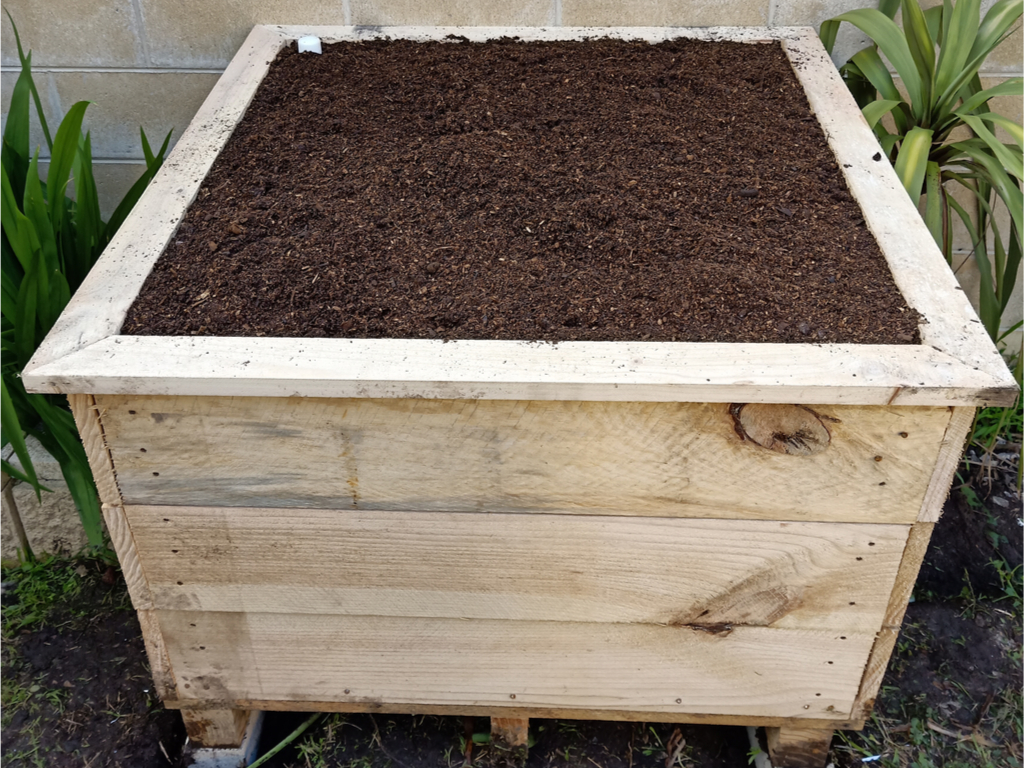
Hydroponics and aquaponics systems can be great solutions for small spaces. Potatoes cannot be grown in other types of bed in a hydroponic or aquaponic system, but they can be grown in a wicking bed.
A wicking bed has a reservoir at the base which contains garvel and is filled with water with a typical grow bed above that reservoir. Water wicks up through the structure and can be taken up by plant roots.
Wicking Bed @ deepgreenpermaculture.com
21. Grow TomTato® – Grafted Plants for Potatoes AND Tomatoes
This final suggestion is not about how you grow, but what you grow.
Rather than growing typical potatoes, those gardening in very small spaces could consider growing amazing grafted plants. The TomTato® or Pomato is a ‘Frankenstein’ plant, made by grafting the roots of white potato onto a scion of cherry tomato.
Growing these plants in containers means that you can obtain not only a yield of potatoes, but a yield of cherry tomatoes too!
Here’s more info about the TomTato® plant.
Could this be the ultimate space saving idea for your garden?

Get the famous Rural Sprout newsletter delivered to your inbox.
Join the 50,000+ gardeners who get timely gardening tutorials, tips and tasks delivered direct to their inbox.


